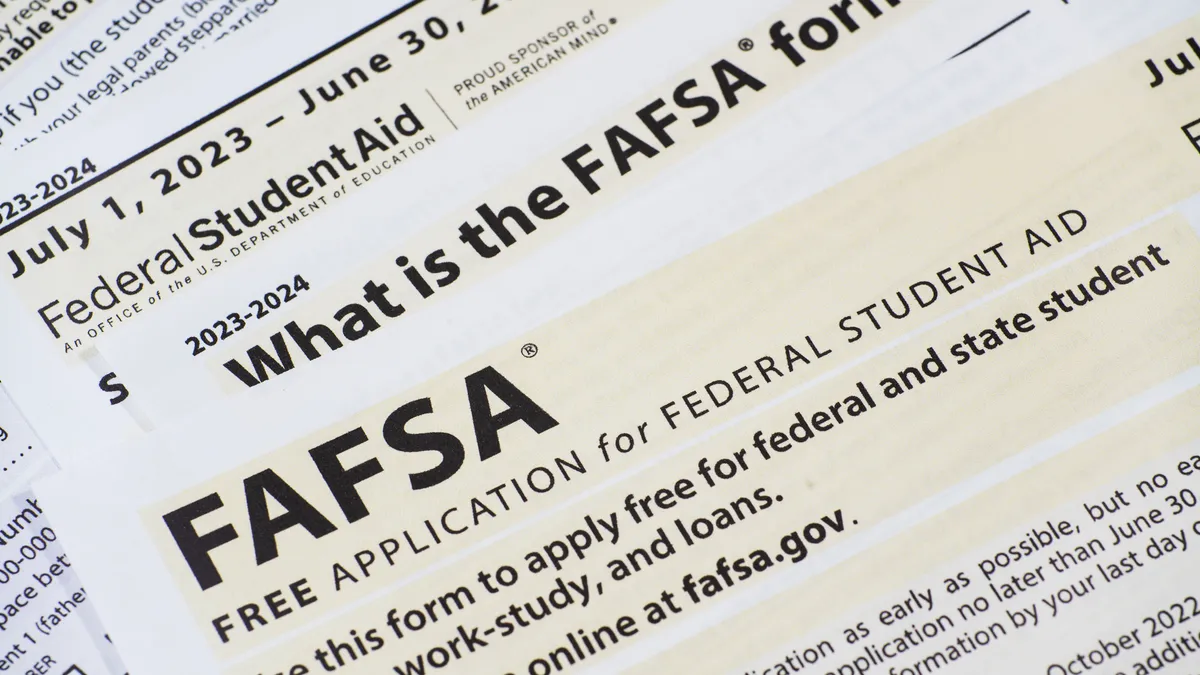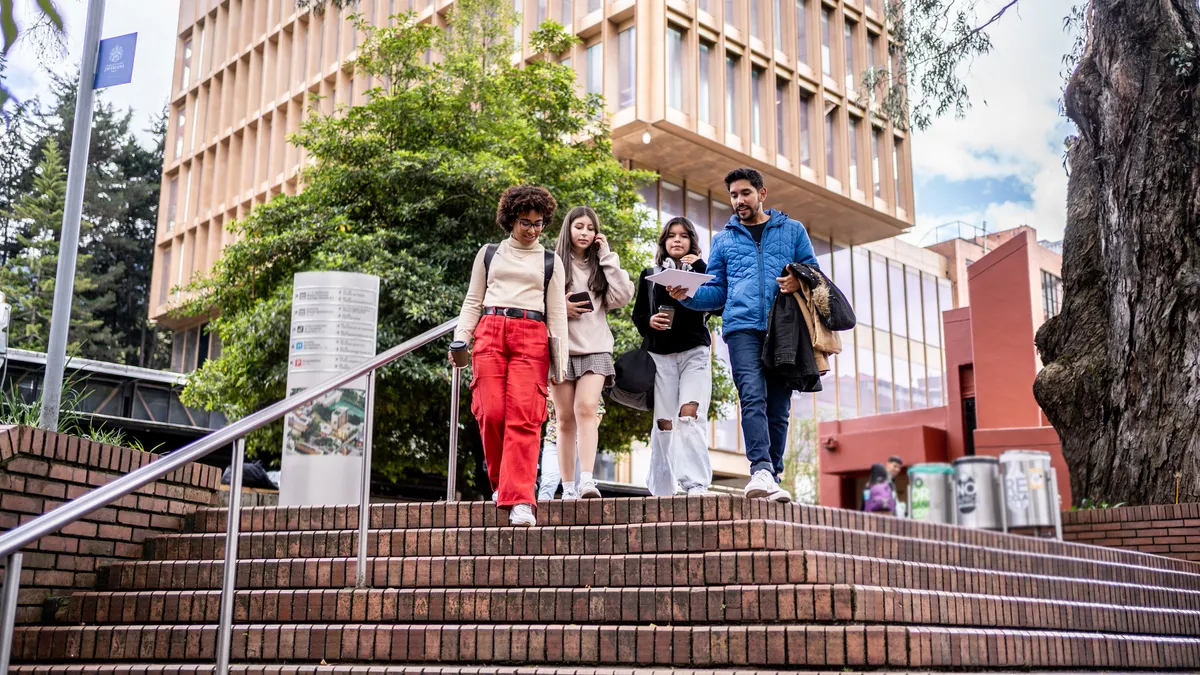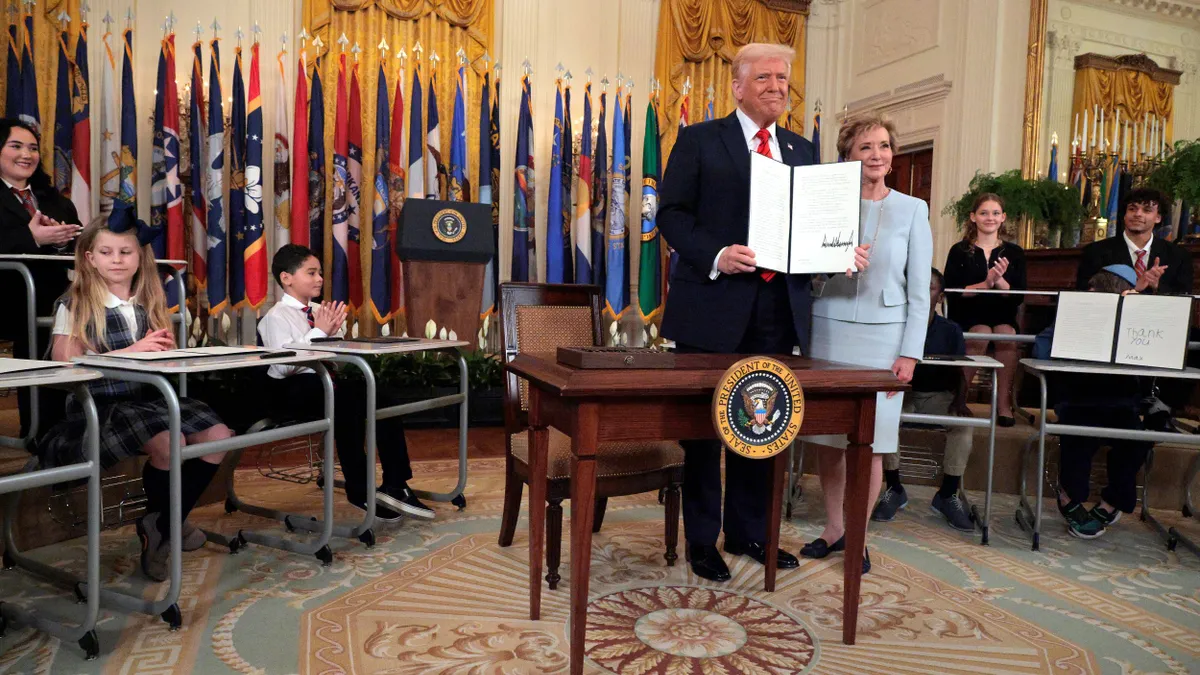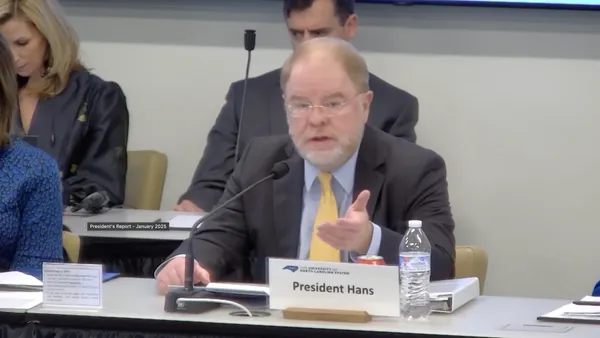Dive Brief:
-
The U.S. Department of Education rolled out the 2026-27 Free Application for Federal Student Aid to all students Wednesday, about a week before the congressionally mandated deadline.
-
Education Department officials billed the release as the “earliest launch in the program’s history.” The new form comes with several updates, including a redesigned process for inviting parents or other contributors to add information to the application and faster account verification for students and parents, according to the agency.
- The on-time FAFSA follows later than usual releases the past two years. In 2023, the Education Department didn’t roll out the FAFSA until the final days of December — nearly three months after students and their families usually can access the form.
Dive Insight:
Education Department officials praised the on-time release after two rocky financial aid cycles.
“No one would have thought this was possible after the Biden-Harris administration infamously botched FAFSA’s rollout two short years ago,” U.S. Education Secretary Linda McMahon said in a Wednesday statement.
In 2023, the Biden administration was responsible for carrying out the first major redesign of the FAFSA in over four decades, including by paring down the number of questions applicants must answer. However, even after the Education Department released the FAFSA in December that year, many students and families struggled to complete the form due to glitches and other technical issues.
Moreover, the Education Department didn’t begin sending FAFSA applicant data to colleges that financial aid cycle until March 2024, even though that information is typically available shortly after the form rolls out in October. Scores of colleges pushed back their traditional May 1 decision deadline as a result.
In response, congressional lawmakers passed a law in November 2024 mandating that the Education Department release the form by Oct. 1 each year. The statute also requires the U.S. education secretary to testify before Congress if the agency anticipates it will miss the deadline.
This year, the Education Department began beta testing the form in early August. During that period, students started nearly 44,000 FAFSA forms and submitted roughly 27,000 of them, according to the department. The agency has processed almost 24,000 FAFSA forms without rejection.
However, this financial aid cycle hasn’t come without criticism. A report earlier this month from the U.S. Government Accountability Office, a federal watchdog agency, raised questions about whether the Education Department was adequately overseeing contracted work on the new back-end system launched in 2023 for processing FAFSAs.
In September 2024, the Education Department told GAO officials that several functions required by a contract with a third-party vendor were not yet available, including the ability to make corrections to FAFSA applications and modify eligibility rules. At the time, the department said those functions would be available by 2026.
However, as of May 2025, the Education Department couldn’t provide an update on the system and said it was no longer tracking the contractual requirements, according to the GAO report. GAO recommended that Federal Student Aid’s chief operating officer take steps to improve contract monitoring.
The GAO’s report included a response from Aaron Lemon-Strauss, executive director of the FAFSA program, who pushed back on GAO’s framing. Lemon-Strauss wrote that some of its recommendations embrace a model that “assumes initial contracts can fully anticipate a system’s evolving needs.”
Lemon-Strauss, who joined the department last year, said the agency has made changes to its FAFSA vendor contracts that allow it to adapt to user needs. For instance, after the 2024 FAFSA release, department officials identified that the FAFSA system still did not allow users to import their answers from the prior year to start their new forms — a contractually required feature.
“This is undoubtedly a helpful feature and one that should be included in the FAFSA,” Lemon-Strauss said to GAO. “Yet, rather than mechanically moving to implementing renewal capability, the team examined user data to determine where their next efforts would be maximally useful.”
Internal data showed that some 5% of users were exiting the form and not returning once they needed to invite their parents or other contributors — such as a spouse or a parent's spouse — to work on the application. In response, the Education Department decided to prioritize redesigning the process to invite outside contributors instead of focusing on the contractually required feature, Lemon-Strauss said.












